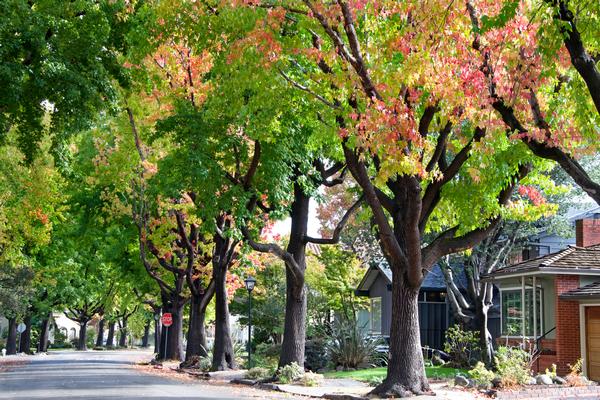Many homeowners want to have mature trees on their property. They provide shade, they are pretty to look at, help provide cleaner air in your surroundings, and provide some natural beauty. The downside of trees is that they can get damaged in storms or from heavy snow or rainfall and sometimes damage other property, your home, or even your neighbor’s. Issues with a property line tree dispute can potentially cause a commotion between you and your neighbors. Below we will provide some helpful tips and tricks for dealing with tree related property damage on your property or a neighbor’s.
Please be advised, the contents of this article are not legal advice and we are not attorneys. If you are actively in a dispute we recommend you consult an attorney and do not take any actions based on these recommendations. This information is attended to help you avoid issues and disputes.
Can I Trim My Tree? Can I Trim my Neighbor’s Tree?
In the State of Colorado, property owners under common law have the right to cut off roots or branches that extend over their property lines. This means that you can trim branches or roots of any tree that is extending over or under your fence or property line in order to avoid other property damages or injuries. The person who is trimming the tree is legally responsible for all expenses and potential damages from trimming the tree.
Additionally, knowingly cutting, altering, or removing a boundary tree is a class 2 misdemeanor. This essentially means you cannot remove a tree that breaks your boundary line to an adjoining property. If the tree’s trunk itself is on both your and your neighbor’s property, it is the common property of the owners of the adjoining land.
Before trimming any trees that are extending over your property line, we do recommend informing your neighbors to avoid any property line tree disputes.
Who is Responsible for Fallen Tree Damage?
If your tree falls or branches fall during a storm and cause damage to a neighboring property or vehicle, it is the property owner’s responsibility to file an insurance claim. As long as the damage was not directly caused due to negligence, such as refusing to trim dead branches from a tree above a neighbor’s roof, weather events that are out of your control are not your responsibility.
However, this is one of the reasons why it’s important to have your trees assessed and trimmed properly to avoid unnecessary damage.
Who Is Responsible for Fallen Tree Debris?
In the State of Colorado, property owners and residents are responsible for fallen tree debris and branches on their private property. This means that if branches fall from a storm on your property, you are responsible for cleaning them up. If the branches fall onto your neighbor’s property, they are responsible for cleaning up debris on their side of the property line.
What is a Boundary Tree?
A boundary tree is any tree that has a trunk that is within the invisible line that borders your property and the adjoining land. When dealing with issues on a boundary tree, it is important to cooperate with your neighbor as these trees are common property between both of you. You should work together to decide whether to trim or remove a boundary tree as this can be a class 2 misdemeanor in the State of Colorado. So, if you know you have a boundary tree and aren’t friendly with your neighbor yet, you may as well strike up a conversation to avoid a potentially unpleasant situation in the future.
You can refer to Title 18 Statute for more information.
Got More Tree Questions?
Many of these reasons are why it is best to consult a professional when you may have a confusing tree issue to make sure you make the right decision that is both safe and legal and likely to keep you out of any feuds in your neighborhood. If you have recently resolved a property line tree dispute and need help with tree trimming or tree removal, contact the experts at Splintered Forest.

